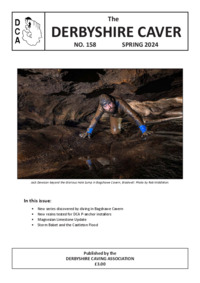Les W
Active member
mikem said:Interesting article from 1912:
https://pubs.usgs.gov/bul/0523/report.pdf
Nice find, cheers.

mikem said:Interesting article from 1912:
https://pubs.usgs.gov/bul/0523/report.pdf
Ian Adams said:What's "moonmilk" then ?
Ian
droid said:Genius
grahams said:..... something in the resulting chemical mix might show up as dodgy.
Ian Adams said:grahams said:..... something in the resulting chemical mix might show up as dodgy.
Put it in your mates bag?
Ian
there's already to much of that going on in our club
Calcium nitrate is also the Saltpetre that was extracted in the US caves.
Calcium nitrate is very soluble so is only to be found in dry caves.
The calcium nitrate was leached from the cave soil in vats, collected and then taken from the caves to be processed.
The first stage was to concentrate the solution using evaporation, generally using wood fires.
The concentrate was then reacted with potash (potassium carbonate, from the ashes of the wood fires used in the evaporation process). The calcium would be precipitated as calcium carbonate and would be replaced by the potassium in the solution to make potassium nitrate. The subsequent solution would be further "dried" by evaporation and the saltpetre crystals would remain.
The process is well documented and was primarily used to produce saltpetre for gunpowder, when the main source was denied.
Fulk said:Les W:
Calcium nitrate is also the Saltpetre that was extracted in the US caves.
Calcium nitrate is very soluble so is only to be found in dry caves.
The calcium nitrate was leached from the cave soil in vats, collected and then taken from the caves to be processed.
The first stage was to concentrate the solution using evaporation, generally using wood fires.
The concentrate was then reacted with potash (potassium carbonate, from the ashes of the wood fires used in the evaporation process). The calcium would be precipitated as calcium carbonate and would be replaced by the potassium in the solution to make potassium nitrate. The subsequent solution would be further "dried" by evaporation and the saltpetre crystals would remain.
The process is well documented and was primarily used to produce saltpetre for gunpowder, when the main source was denied.
I wonder who first thought that up?
Potassium nitrate was once thought to induce impotence, and is still falsely rumored to be in institutional food (such as military fare) as an anaphrodisiac; however, there is no scientific evidence for such properties
